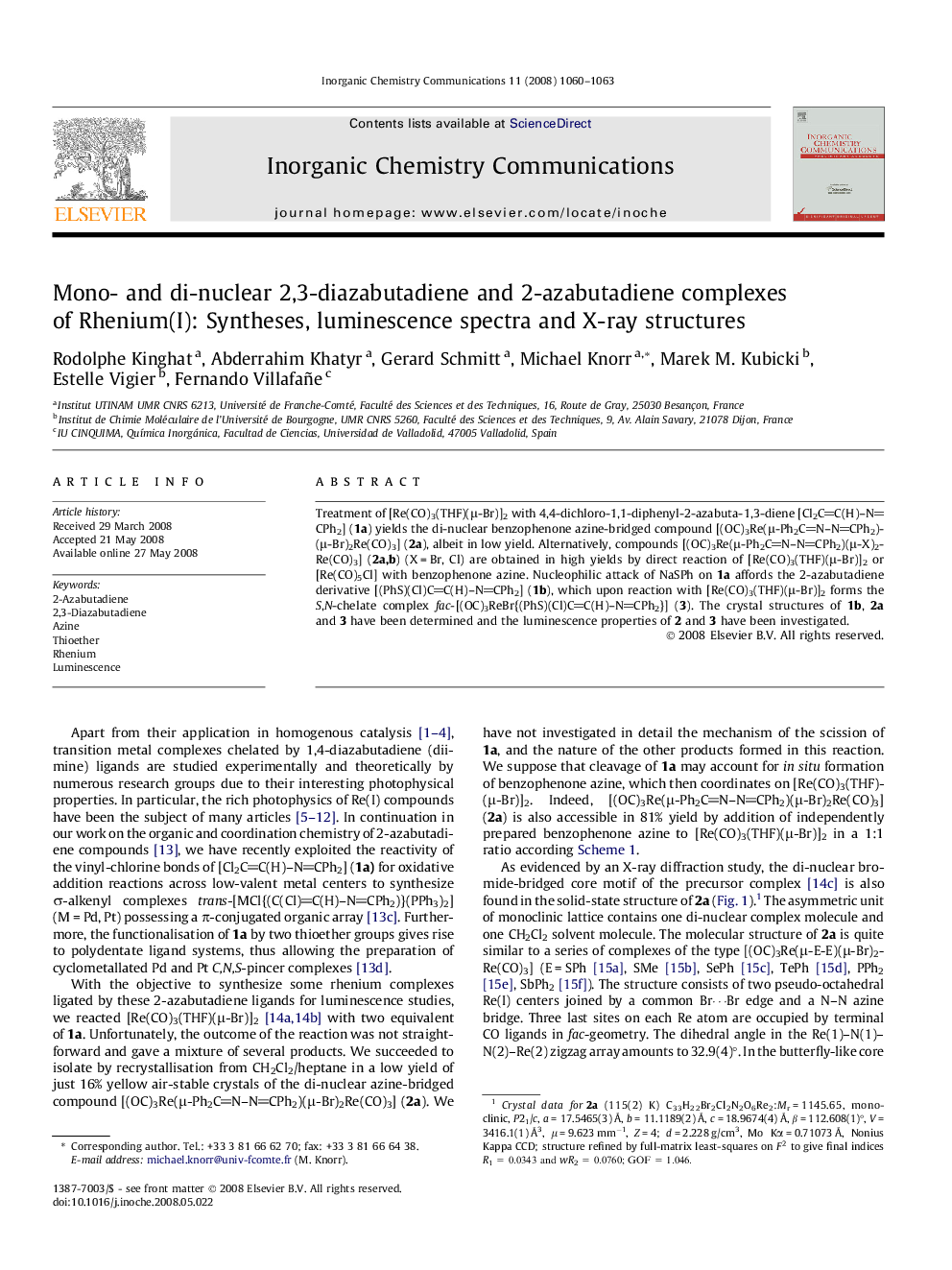| Article ID | Journal | Published Year | Pages | File Type |
|---|---|---|---|---|
| 1304736 | Inorganic Chemistry Communications | 2008 | 4 Pages |
Treatment of [Re(CO)3(THF)(μ-Br)]2 with 4,4-dichloro-1,1-diphenyl-2-azabuta-1,3-diene [Cl2CC(H)–NCPh2] (1a) yields the di-nuclear benzophenone azine-bridged compound [(OC)3Re(μ-Ph2CN–NCPh2)(μ-Br)2Re(CO)3] (2a), albeit in low yield. Alternatively, compounds [(OC)3Re(μ-Ph2CN–NCPh2)(μ-X)2Re(CO)3] (2a,b) (X = Br, Cl) are obtained in high yields by direct reaction of [Re(CO)3(THF)(μ-Br)]2 or [Re(CO)5Cl] with benzophenone azine. Nucleophilic attack of NaSPh on 1a affords the 2-azabutadiene derivative [(PhS)(Cl)CC(H)–NCPh2] (1b), which upon reaction with [Re(CO)3(THF)(μ-Br)]2 forms the S,N-chelate complex fac-[(OC)3ReBr{(PhS)(Cl)CC(H)–NCPh2}] (3). The crystal structures of 1b, 2a and 3 have been determined and the luminescence properties of 2 and 3 have been investigated.
Graphical abstractThe di-nuclear complexes [(OC)3Re(μ-Ph2CN–NCPh2)(μ-X)2Re(CO)3] (X = Br, Cl), which represent the first examples of benzophenone azine-bridged complexes, have been prepared. Nucleophilic attack of NaSPh on [Cl2CC(H)–NCPh2] affords the 2-azabutadiene derivative [(PhS)(Cl)CC(H)–NCPh2], which upon reaction with [Re(CO)3(THF)(μ-Br)]2 forms the luminescent S,N-chelate complex fac-[(OC)3ReBr{(PhS)(Cl)CC(H)–NCPh2}].Figure optionsDownload full-size imageDownload as PowerPoint slide
